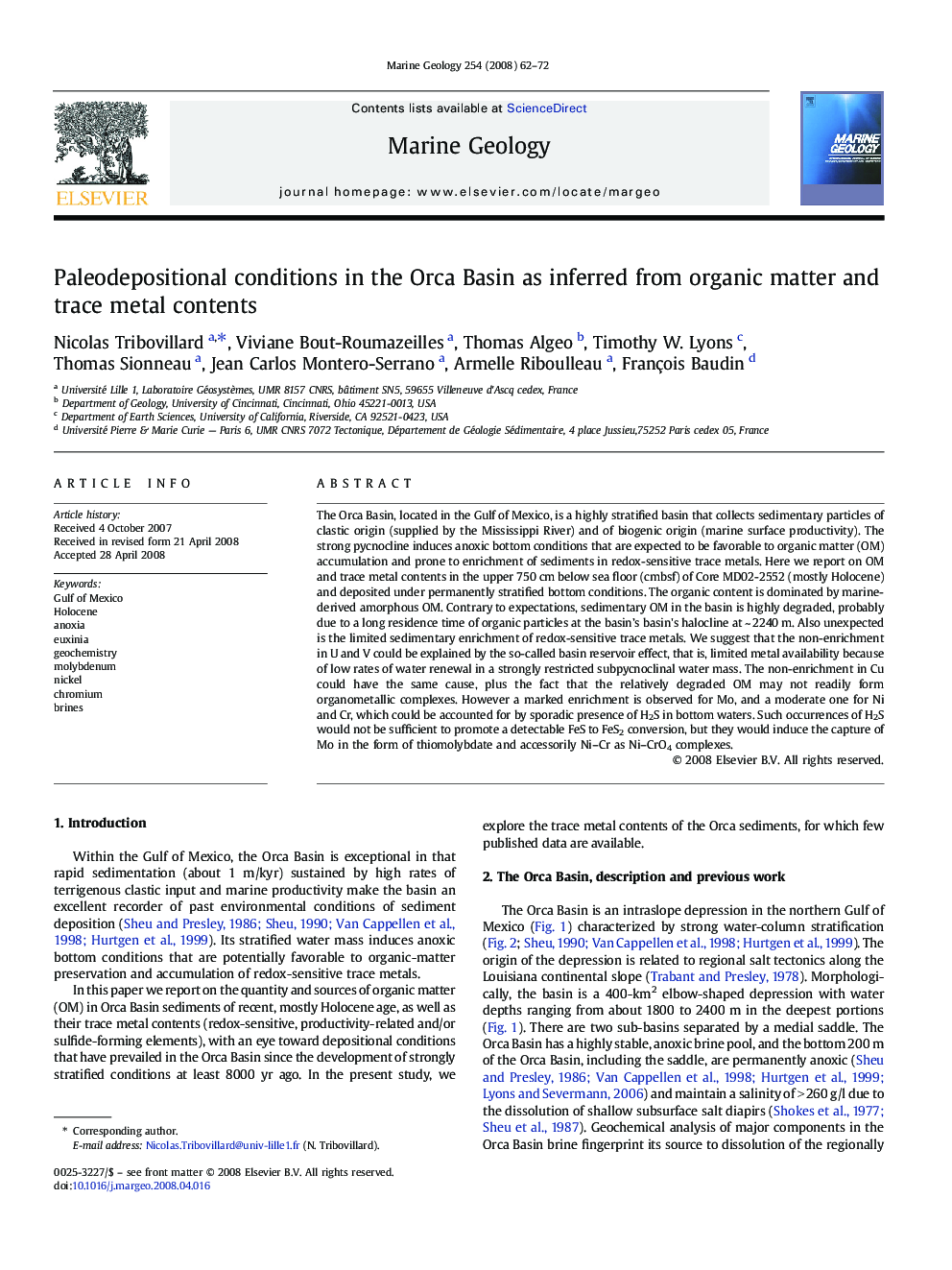| Article ID | Journal | Published Year | Pages | File Type |
|---|---|---|---|---|
| 4719231 | Marine Geology | 2008 | 11 Pages |
The Orca Basin, located in the Gulf of Mexico, is a highly stratified basin that collects sedimentary particles of clastic origin (supplied by the Mississippi River) and of biogenic origin (marine surface productivity). The strong pycnocline induces anoxic bottom conditions that are expected to be favorable to organic matter (OM) accumulation and prone to enrichment of sediments in redox-sensitive trace metals. Here we report on OM and trace metal contents in the upper 750 cm below sea floor (cmbsf) of Core MD02-2552 (mostly Holocene) and deposited under permanently stratified bottom conditions. The organic content is dominated by marine-derived amorphous OM. Contrary to expectations, sedimentary OM in the basin is highly degraded, probably due to a long residence time of organic particles at the basin’s basin's halocline at ~ 2240 m. Also unexpected is the limited sedimentary enrichment of redox-sensitive trace metals. We suggest that the non-enrichment in U and V could be explained by the so-called basin reservoir effect, that is, limited metal availability because of low rates of water renewal in a strongly restricted subpycnoclinal water mass. The non-enrichment in Cu could have the same cause, plus the fact that the relatively degraded OM may not readily form organometallic complexes. However a marked enrichment is observed for Mo, and a moderate one for Ni and Cr, which could be accounted for by sporadic presence of H2S in bottom waters. Such occurrences of H2S would not be sufficient to promote a detectable FeS to FeS2 conversion, but they would induce the capture of Mo in the form of thiomolybdate and accessorily Ni–Cr as Ni–CrO4 complexes.
